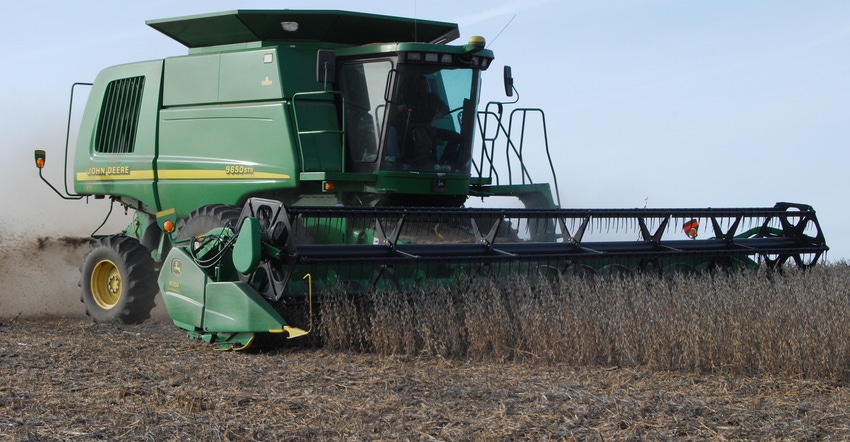December 3, 2018

If you’re applying for a payment from USDA’s new Market Facilitation Program, keep a couple of factors in mind before heading to your local Farm Service Agency office.
Form CCC-910 requires an actual production number by crop and the source of production evidence. You do not need to submit your records to FSA.
MFP is a self-certification program, subject to spot-check of your production evidence. This is similar to the loan deficiency payment farmers used extensively from 1996 through 2006.
The easiest source of production evidence is likely “soft records” that crop insurance requires in determining if a crop insurance loss is likely. These records are typically yield monitor data or scales on grain carts with proof of calibration.
Also, consider the use of self-measured grain bins, in addition to scale tickets. FSA doesn’t require you to come into the office with “hard records” verified by a third party. Examples of hard records are warehouse receipts, settlement sheets and certified grain bin measurements.
However, FSA will want you to use the net production or net weight of those bushels — meaning production adjusted for dry-weight bushels. So, you’ll adjust the gross production of wet bushels down to 13% moisture for soybeans and 15% for corn just as you do for crop insurance purposes.
Soybean insurance claims
USDA’s Risk Management Agency released its harvest prices to figure out potential 2018 crop insurance losses for farmers who have revenue policies. These prices are $8.60 per bushel for soybeans and $3.68 per bushel for corn. These are the simple average daily closes in the month of October for November soybean and December corn futures.
That soybean price, compared to the spring projected price of $10.16 per bushel, is a drop of over 15%. If your average 2018 soybean production was equal to your actual production history and you elected an 85% coverage level, you are at the threshold for a revenue loss payment.
Some farmers will trigger losses for soybeans resulting from adverse weather this past growing season. However, your crop insurance agent needs to know your production by farm to determine that potential loss payment.
Consider submitting these same soft records used for MFP to your crop insurance agent. Using the same records with FSA and for crop insurance will reduce time and effort.
Some soybean fields were damaged by heavy rains just before harvest. Beans may have developed mold that added to foreign material or splits prior to delivery to an elevator or processor. Depending on the amount of damage, there may have been a crop insurance payment for quality loss. Notifying your crop insurance agent about such concerns before harvest would have been beneficial.
Quality discounts
Elevators and processors may charge soybean quality discounts beyond the moisture adjustment from gross production to net production. Most of these discounts are a reduction in price per bushel: dollars and cents.
If you haven’t already visited your FSA office to apply for the MFP payment, do it now. This can be taken care of as soon as you finish harvest and have actual production records compiled by crop. Keep in mind you are going into the office with one number — actual production by crop — as well as indicating the source of production evidence.
Johnson is an Iowa State University Extension farm management specialist. He can be reached at [email protected].
About the Author(s)
You May Also Like






